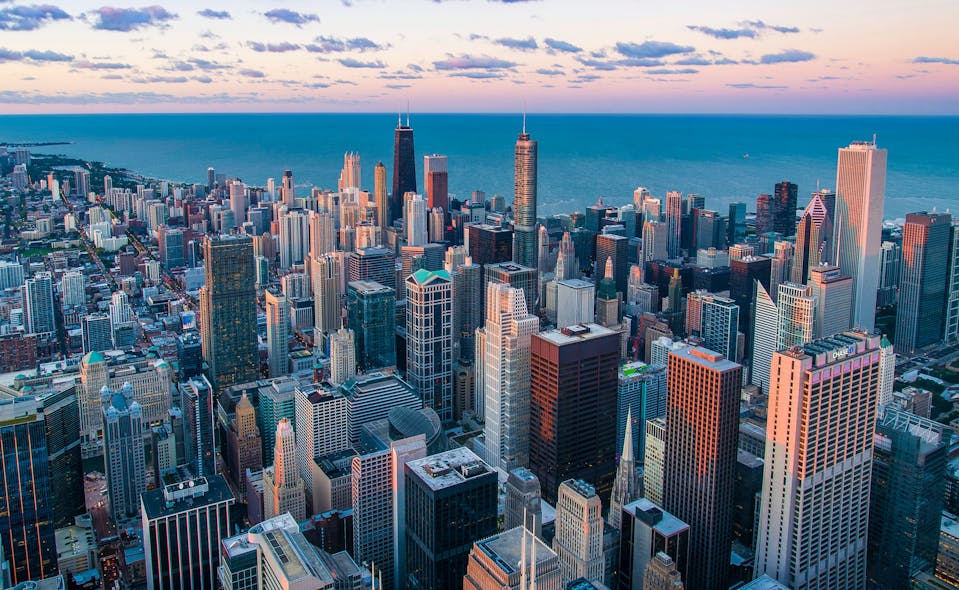October 12, 2021
Will a Robot Take Your Job? Exploring the Future of AI
What does artificial intelligence have in store for us, and should we be welcoming it with open arms? All these answers, and more, unpacked in this 5-minute read.

AI - otherwise known as artificial intelligence - is a hot topic of conversation these days. Fueled by its varied presentations in fiction and film, it’s often seen as either the vehicle for building our future utopia, or the force behind humanity’s self-destruction. Either way, it’s pretty dramatic.
Your perception of this technology might largely depend on how it will impact your career down the line. The search query “Will a robot take my job?” reaches thousands of monthly hits each month. On a grander scale, you may fear the apocalyptic scenarios in which AI either goes rogue or gets misused by various power structures (science, military, criminal underworld, you name it).
But what really does the future have in store, and, more importantly, what does it mean for you personally? Should we be welcoming this new age or dreading an AI-powered future? Here, we break down essential insights into the predictions made by tech experts, futurologists, and scientists who’ve been studying artificial intelligence - and its potential impact on human lives - for decades.
What’s important to remember is that we have been at this junction before, trying to reckon with the impact of life-changing technology. At the start of the Industrial Revolution, many lived in fear of the impact this new age would have on everyday lives. But it is us humans that will ultimately determine whether AI will ultimately be used for ‘good’ or ‘bad’, not the lines of code or deep learning platforms.
1. Introduction to Artificial Intelligence (AI) - Rav Ahuja
On Uptime
What is AI? Is AI safe? In this eye-opening course, Rav Ahuja, the global program director at IBM, explores the popular idea that robots are coming for our jobs. Not a man for pessimism, Ahuja argues that AI will do only what human developers allow it to - which means we’re still the ones in control, as long as our intentions are good.
For example, AI used for public facial recognition is a great tool for combating crime - as long as the people programming the tool in the first place aren’t ridden with subconscious bias. In the eyes of malicious stakeholders, these tools can become a way to further an underlying agenda, like recognizing the ‘opponents’ of the establishment. Otherwise, we’ve got a Big Brother situation on our hands.
The key takeaway here? The only way to alleviate public fears of AI is by becoming more transparent about its usage. This openness is what will foster trust. Currently, facial recognition technology has a worrying track record of misidentifying faces, particularly those of people of color. Like any other tool, facial recognition can be used for good or evil ends. It just depends on the intent of the person wielding it.
 No matter how much of a good intent you put behind using something for good, it's going to be used and misconstrued in some way to be used for bad. Just as fire is great for cooking food, it's also great for burning people's houses down.
No matter how much of a good intent you put behind using something for good, it's going to be used and misconstrued in some way to be used for bad. Just as fire is great for cooking food, it's also great for burning people's houses down.- Steven Waslander, associate professor, University of Toronto
To explore these lessons in more detail, have a look at our Introduction to Artificial Intelligence summary.
2. The Age of AI: How Far Is Too Far? - Yon MotskinIan, Craig Walker
On Uptime
In this cutting-edge documentary, the world-renowned actor Robert Downey Jr. (the star of the Iron Man film series) talks about the challenges that await the future adoption of AI technology.
 Tractors didn’t make farming obsolete and video didn’t kill the radio star – it just provided new opportunities.
Tractors didn’t make farming obsolete and video didn’t kill the radio star – it just provided new opportunities.- Robert Downey Jr.
Instead of spreading fear of AI, the experts featured in this documentary echo the words of Mr. RDJ, reminding the viewers that people and machines have been collaborating for a long time. (And, no, it has not brought the destruction of either collaborator so far, despite what The Matrix or the Terminator series would try and have us believe.)
Yet, AI is more than a steam machine. The ultimate goal of artificial intelligence is for it to emulate human thinking and behavior with a healthy dose of machine-simulated emotions. This will be achieved by empowering the neural networks of today with the technology of affective computing. AI will then be able to moderate its actions with emotions that run based on virtual neurotransmitters.
These will, in turn, stand guard against any scenario in which AI might attempt to harm humankind down the line.
Our summary of the documentary goes into these ideas in more detail, including exploring why collaborative intelligence between us and AI is the key to future progress. Artificial intelligence could even be used in the future to replicate amputated limbs via 3D-printing. Check it out in full with our The Age of AI: How Far is Too Far? summary.
3. AI Superpowers: China, Silicon Valley, and the New World Order - Kai-Fu Lee
On Uptime
Now for some optimistic thinking about the future of AI. Kai-Fu Lee has a big vision for the future, and AI plays a key role in it.
 We've got a great chance to give many undesirable jobs to computers and make the important aspects of our lives better. But we've got to make some changes to the type of work we value for this to work.
We've got a great chance to give many undesirable jobs to computers and make the important aspects of our lives better. But we've got to make some changes to the type of work we value for this to work.- Kai-Fu Lee
Will AI bring about the destruction of the planet? Not according to AI Superpowers.
Kai-Fu Lee’s book presents a thought-provoking vision for the future. Yes, AI will replace some jobs - but only the repetitive, analytical positions that aren’t emotionally fulfilling for humans anyway. one in which AI takes the burden off repetitive analytical jobs that drive profit, while humankind is given more space to focus on more socially-oriented positions.
What jobs will be replaced by AI?
Only humans are capable of compassion and warmth. Through deep learning, we can eventually teach machines to be very, very smart - smarter than humans, perhaps - but it’s much harder to teach a computer the optics of human emotion.
This means that jobs with a social focus, such as care-workers (positions which are also currently underpaid), are much harder to replace with computers. Other jobs that are at low risk of being replaced by AI include everything from dog training to physical therapy, as well as the jobs of a CEO, criminal defense attorney, or public relations director. This is because these jobs all have a focus on social interaction, creativity, and personalizing your strategy according to each scenario you encounter, rather than making automated decisions based on patterns and data.
On the other hand, jobs such as truck drivers, dishwashers, and cashiers risk becoming replaced by AI, as these are physical jobs in structured environments that a machine can easily learn how to work in.
However, Kai-Fu Lee argues that automating these sorts of jobs will allow for increasing the wages for more socially-focused jobs instead, while leaving the AI in charge of dry, analytical tasks.
This will create a needed synergy between man and the machine, ushering us into the brighter future.
To find out more, you can have a look at the book's most important lessons with our AI Superpowers book summary.
Wrap-Up
The age of AI is upon us, and it will drive a new technological revolution not unlike what the wheel, steam engines, and computers inspired in earlier ages.
And, just as the wheel can power both an ambulance and a tank, the future of AI will be shaped not much by the technology itself, but by our ability and the courage to devise the best ways to utilize this technology for the nobler goals.
If you're curious to find out more about trending conversations in tech and business, why not have a look at our guide to understanding Bitcoin or NFTs, or see what a man with his eyes firmly planted on the future - Elon Musk - is reading?
Recommended















